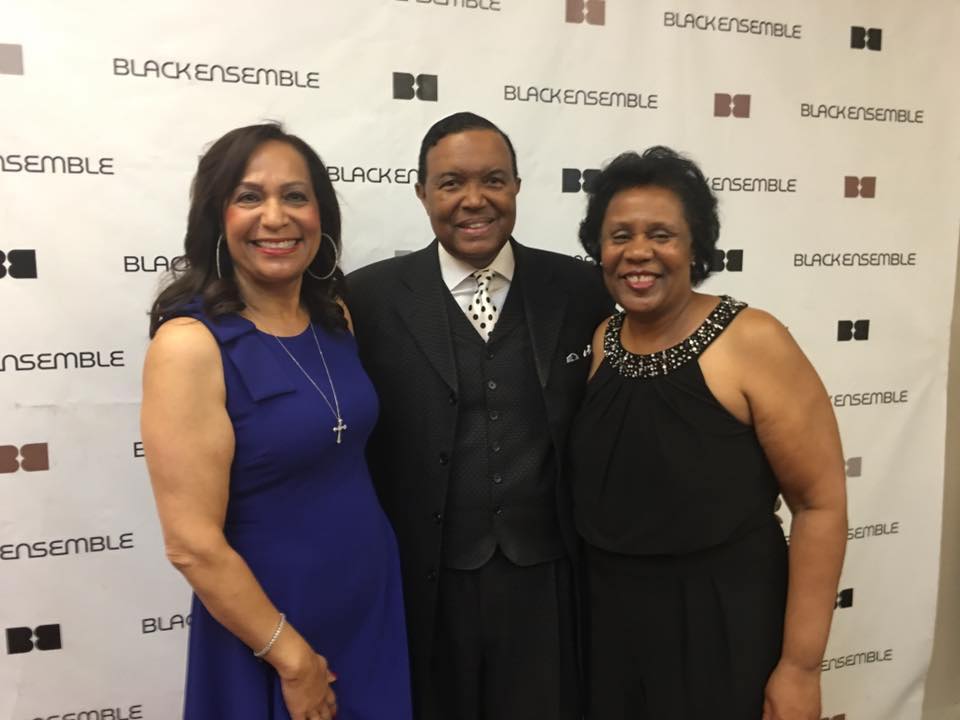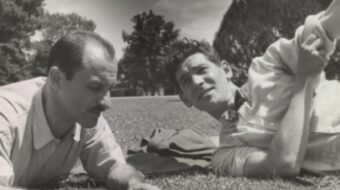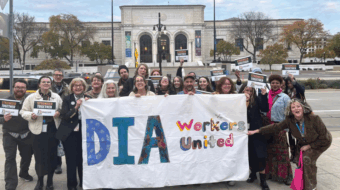
In a year in which American culture has suffered the loss of such artists as Prince and David Bowie, it is worth noting one dynamo in the arts scene that has entertained and educated its audiences and celebrated African American creativity for 40 years—and still persists vibrantly in this project.
The Black Ensemble Theater, founded by Jackie Taylor, marked its 40th anniversary in 2016, just completing another season in Chicago chronicling American, particularly African American, cultural history.
In our current political context, the importance of Taylor’s 40-year theatrical project cannot be underestimated. Donald Trump’s campaign not only fostered racism in America but also represented African Americans as a passive, down-trodden people in need of salvation from the likes of him. We can recall his pitch to African America, usually addressed to white audiences, “You’re living in your poverty, your schools are no good, you have no jobs, 58 percent of your youth is unemployed — what the hell do you have to lose?”
The Black Ensemble Theater offers an important counter-force to those damaging portraits produced not just by Trump but by the dominant American culture, both historically and, obviously, in our contemporary era. While producing thoroughly engaging and lively entertainment, BET prides itself on its social mission and political commitment, as its mission statement announces:
“The mission of the Black Ensemble Theater is to eradicate racism and its damaging effects upon our society through the utilization of theater arts. BE is the only theater in the nation whose mission is to eradicate racism. Other organizations work to diversify audiences, but none utilize theater to bring races together in a community which embraces similarities and fosters dialogue, understanding and acceptance.
It fulfills this mission in part by challenging such portrayals as those Trump, among others, offers through charting the role of African American artists in shaping American culture. While Taylor does not shy away from the internal struggles of African American life or from the realities of racial oppression, arguably her productions’ central focus is African American artistry itself, the power of African America’s creative response to living conditions in racist America.
This last season I was fortunate enough to see BET’s productions about musical legends Marvin Gaye, Jackie Wilson, and Teddy Pendergrass. These productions bring to life the way that music and the particular artists have given shape and consciousness to a historical and political, as well as deeply personal, experience at once vexed by repression, yet tenaciously vibrant with intellectual creative energy.
In The Jackie Wilson Story, for example, Taylor portrays Wilson as possessing an overwhelming creative energy, underscoring his substantial originality and innovation as a singer and performer who preceded and influenced Elvis Presley. She is not hesitant about representing the pitfalls in his own life as an absent father and husband and his problems with drug abuse.
She also represents the music industry’s exploitation of Wilson, who, as represented in the play, is so consumed with music and performance that he neglects the business dimension of his enterprise, ignoring the wisdom of his friends and advisors. This neglect leads eventually to his financial ruin.
Still, in the spirit of perhaps Wilson’s biggest hit, “(Your Love has Lifted Me) Higher and Higher,” Taylor’s musical drama offers an abundance of political, spiritual, and emotional uplift, which is particularly necessary in this troubling political season. What Taylor accentuates, in this and other productions, is the abundance of creativity within Black America and the need to exercise that creativity outside of the narrow space of the stage and studio by bringing it to bear on the more complex sets of social problems and relationships in our lives.
Instead of letting our creative energies be exploited by others, in the commercial and other realms, we need to harness that same creative energy to solve our own problems and make our own lives and communities better—which is exactly how BET defines its artistic mission.
Similarly, The Marvin Gaye Story analyzes not just Marvin Gaye’s intimate life, but the larger historical trauma of African America. Gaye’s music, as Taylor’s drama tells the story, almost psychotherapeutically seeks to heal these personal and collective traumas.
The aesthetic mode, particularly music, that Taylor has focused on in her years-long project of cultural recovery, offers a clarity of understanding the confusions, the challenges, the repressions, joys, and persisting conundrums in Black American life that other forms of expression simply cannot provide. She gives us a sense of celebration in Gaye’s music even as it gives voice to profound individual, familial and collective pain.
Ultimately, Taylor represents Gaye’s music as the vehicle through which he worked out problems that were not his alone but also endemic to his larger community – issues of drug abuse, of self-hatred and self-doubt, and also intense and persistent social violence in a racist, war-mongering America that devalues Black lives.
Arguably, a major thrust of the anti-racist work BET does, at least in its performances, is providing narratives of healing and liberation, creating a lens through which we can embrace, understand, and finally address our flaws and weaknesses by recognizing and accessing our creative energies.
This recognition, Taylor’s scripts suggests, requires we come to see ourselves differently. We need to see and understand our own powers and creativity, as individuals and as communities. Indeed, the opening scene of The Jackie Wilson story features Wilson in a hospital bed in a coma. One nurse turns on some music for the comatose Wilson, while another nurse skeptically questions why even bother, pointing to a screen displaying his low vital signs and lack of brain activity, suggesting we can see no signs of meaningful life. The first nurse responds, “You can’t see because you stopped looking.”
Similarly, throughout The Teddy Pendergrass Story, when Pendergrass appears on stage in a wheelchair, suffering paralysis from the chest down because of spinal cord injury endured in a 1982 auto accident, he reminds us, “I am more than what you see.” As the play opens, he tells us, “I am more than just a man in a wheelchair.” And at the same time he accepts who he is with all his flaws and shortcomings, often repeating, “I am who I am.”
Taylor’s writing pushes us to own our flaws and bad behaviors with honesty and without shame and also to recognize all that we are, that we have incredible potential to overcome what hampers us—socially, psychologically, individually—and to address our issues through a positive creative response informed by love and life force.
Creativity, for Taylor, is the appropriate political response to constraint, oppression, or handicap. It is the force of self-activity and agency in the world.
Indeed, in BET’s holiday production The Other Cinderella, which I also saw this year, Taylor revises the tale such that it focuses not so much on Cinderella’s need to be saved by a prince of the higher echelon. Rather, again, Taylor asks us to see the beauty and creativity hidden in those of the oppressed classes that our society as a whole is trained not to see but from which our society could greatly benefit. Cinderella could as easily have uttered Teddy Pendergrass’ line, “I am more than what you see.” The play is not so much about a working-class woman needing to be saved as about a prince, and a class as a whole, on a quest to find beauty and creativity for its own salvation. The world had not seen Cinderella because it stopped looking. Cinderella needs not to be saved but, like Jackie Wilson, to have an outlet to give.
Taylor’s aesthetic is designed to make us look again and to see vitality where we had only seen death or degradation.
The shame of narratives like that which Trump peddles is that in not recognizing the creative resources at our disposal as a society, we can’t avail ourselves of it to better our world. Taylor exercises her own creativity precisely to make the history of African American creative energy available to us all and to give us the vision to comprehend it.










